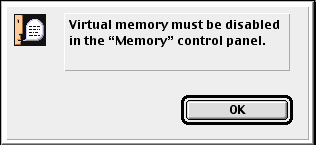Beyond the Barline
Why I’m Waiting To Upgrade
As I write this column, it’s been exactly one month since the official release of Mac OS X. During that month, I’ve been pondering what exactly to write about it from a musician’s point of view. The present lack of support for MIDI and audio applications is quite possibly the worst kept secret on the Internet. Despite the self-conscious silence on the part of both Apple and all major third-party developers, the issues are numerous and appear unlikely to be solved anytime soon. To illustrate my point, I will first list the MIDI and Audio applications supported by OS X: Felt Tip Sound Studio.
In contrast, here are a few of the unsupported applications that will only run in Classic mode: Peak, Deck, Metasynth, Metatrack, Xx, Unity DS- 1, Retro AS- 1, Finale, MAX/MSP, Pro Tools, CuebaseVST, Logic Audio, Digital Performer, and Reaktor.
Two stumbling blocks on the path to carbonization (that is the modification of existing software to run in OS X) specific to audio and MIDI applications respectively make a significant change in this situation unlikely in the short term.
The Problem With Virtual Memory
Virtual Memory (or VM) is the method by which computers add headroom to existing RAM through blocks of free hard drive space. In previous versions of the Mac OS (beginning with System 7), this option is provided as a cheap alternative to buying extra RAM. Beginning with OS X, however, it is activated automatically whenever the software exceeds physical RAM. Most users already leave VM on (in its default setting), but those with sequencers or digital audio applications usually see some variation of the following message:

The Virtual Memory warning in Digidesign’s Pro Tools
Then the program quits, and grumbling, or audible profanity, follows. This incompatibility is intentional, though, since disk memory is considerably slower than RAM. The difference is usually negligible, except when precise timing is required, say to stream a steady word clock in sync with multiple audio tracks.
Of course, if you never exceed your physical RAM (I’m up to 512 MB), virtual memory never kicks in, and the problem should be avoided. The lack of a quick fix to this problem (i.e. disabling the check which causes the software to fail) leads me to suspect that the problem is deeper. I wish I knew more. The lack of clear information is frustrating.
The End of OMS
It’s been about two years since the purchase of Opcode Systems by Gibson Musical Instruments Inc. Shortly thereafter, the fate of Opcode, OMS, and Vision were sealed. The problem was that while Vision was just one of several competing sequencing/digital audio hybrids (others include CuebaseVST, Logic Audio, and Digital Performer), OMS had become the industry standard software-based MIDI environment. The last version (2.38) works fine under OS 9, but since it runs as a system extension, OS X breaks it by default. Had Opcode survived, or had OMS been open-sourced, this problem would have been avoided. Instead Gibson, for reasons only known by their board of directors, let OMS die. So until a new standard arises, MIDI applications will only run in Classic mode.
What To Do?
First off, as Douglas Adams said, “Don’t Panic.” The music industry is rooted in the Mac platform. History and a strong user base are both on our side, and the companies in question would be stupid to abandon the platform that made their greatest successes possible. The problem with virtual memory will be solved, and a new MIDI standard will replace OMS, perhaps MOTU’s Free MIDI, with long-overdue improvements, or a new solution from Steinberg, who have already provided VST and ASIO standards. In the mean-time, we’ll keep making music on OS 9, and let the braver (or less musically inclined) souls work out the bugs. By next year, we will all inherit a far more stable OS. To quote a fabled sage: “Patience, Grasshopper.”
Also in This Series
- Ready or Not! · November 2002
- The Other Petition · August 2002
- The Samples Have Been Changed to Protect the Innocent · May 2002
- Record Execs Ate My Hard Drive! · April 2002
- And the Award Goes to… · March 2002
- Expos, From a Distance · February 2002
- My Resolution · January 2002
- Too Much Hype · November 2001
- And They’re Off! · September 2001
- Complete Archive
Reader Comments (2)
Add A Comment